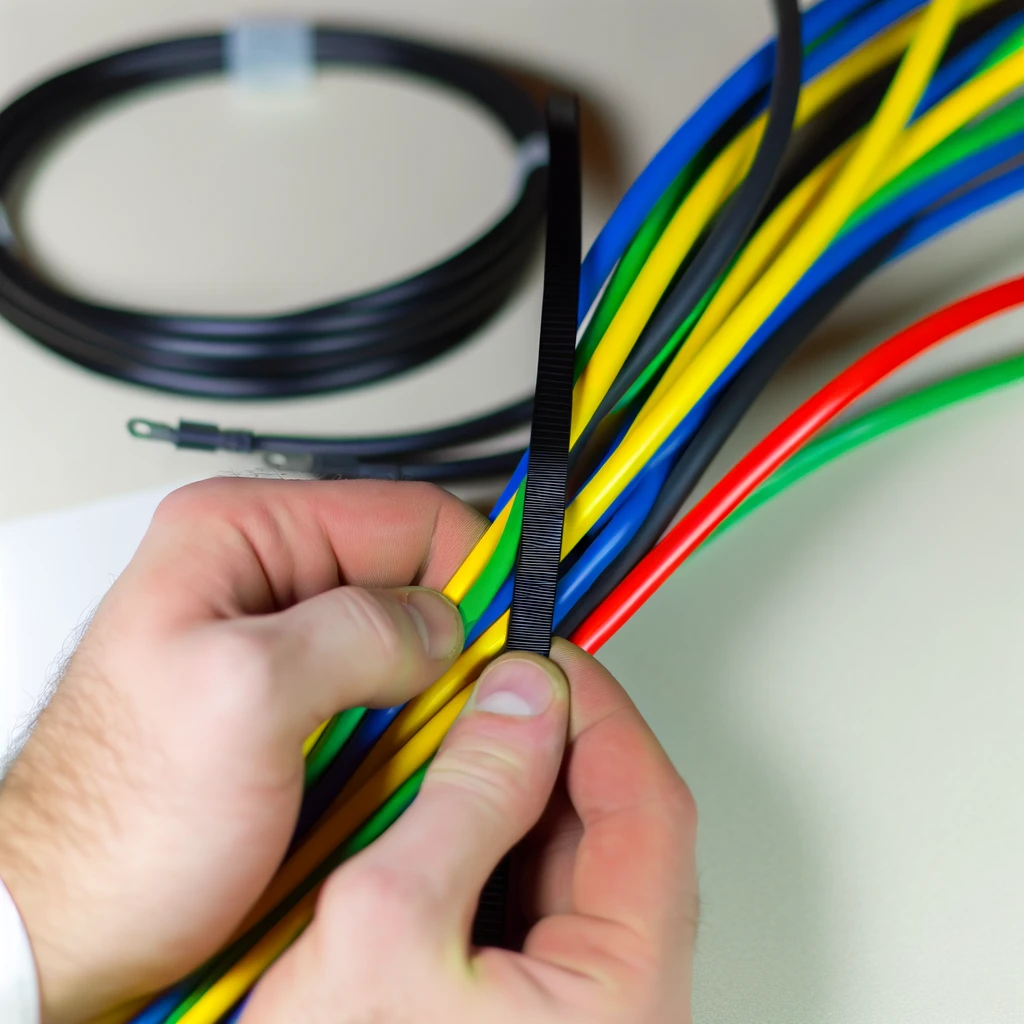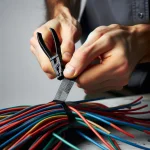Installing cable ties outdoors requires careful planning and execution to ensure a secure, long-lasting installation. Whether you're bundling cables on a utility pole, securing wires in a harsh industrial environment, or organizing your home entertainment system on the patio, avoiding these common mistakes will help you achieve professional results every time.
In this article, we'll cover the top 5 mistakes people make when using cable ties outdoors and provide expert tips on how to sidestep these pitfalls for a flawless finish. By the end, you'll be equipped with the knowledge to confidently tackle any outdoor cable management project.
Mistake #1: Choosing the Wrong Material
One of the most critical factors in outdoor cable tie success is selecting the appropriate material for the job. Standard nylon cable ties may work well indoors, but they can quickly degrade when exposed to UV light, moisture, and extreme temperatures.
For reliable performance in outdoor environments, opt for cable ties made from weather-resistant materials like UV-stabilized nylon or stainless steel. These specialized materials are engineered to withstand the elements and maintain their strength and integrity over time.
Mistake #2: Neglecting Proper Tension
Applying the correct tension is key to a secure cable tie installation, but it's especially important outdoors where wind, vibration, and other forces can cause loosening over time. Overtightening can stress or damage cables, while undertightening leaves room for movement and chafing.
To strike the perfect balance, use a cable tie tension tool with adjustable settings. These tools allow you to apply consistent, optimal tension every time for a snug fit that won't budge. Remember to follow the manufacturer's recommendations for your specific cable tie material and size.
Mistake #3: Ignoring UV Protection

Even if you've chosen a weather-resistant cable tie material, prolonged exposure to ultraviolet (UV) light can cause deterioration and brittleness over time. This is particularly true in sunny climates or high-altitude locations where UV intensity is greater.
To combat UV damage, look for cable ties with built-in UV inhibitors or consider using a protective sleeve or conduit in extreme conditions. Regularly inspecting and replacing worn or damaged ties is also essential for maintaining the integrity of your outdoor installation.
Mistake #4: Forgetting about Abrasion
Abrasion is another common culprit behind premature cable tie failure outdoors. Constant rubbing against rough surfaces like concrete or metal can gradually wear away at the tie material, leading to fraying, splitting, and eventual breakage.
Prevent abrasion damage by using cable ties with a smooth, rounded design that minimizes contact points. In high-friction areas, consider adding protective grommets or sleeves to cushion the ties and cables. Proper routing and support can also help reduce abrasion by keeping cables away from abrasive surfaces.
Mistake #5: Skimping on Quality
When it comes to outdoor cable management, investing in high-quality products can make all the difference in long-term performance and durability. Cheap, off-brand cable ties may seem like a bargain upfront, but they often lack the material strength, UV resistance, and design features needed to withstand tough outdoor conditions.
Stick with trusted brands that specialize in outdoor cable management solutions. Look for products that meet or exceed relevant industry standards and come with clear specifications and performance guarantees. Remember, a little extra investment now can save you time, money, and headaches down the road.
5 Tips for Properly Installing Cable Ties Outdoors
Installing cable ties outdoors requires special considerations to ensure their longevity and effectiveness. Exposure to the elements can significantly impact the performance of cable ties, making it essential to follow best practices for outdoor installations. Here are five tips to help you properly install cable ties outdoors.
1. Choose UV-Resistant Cable Ties
When installing cable ties outdoors, it's crucial to select UV-resistant cable ties. These ties are specifically designed to withstand prolonged exposure to sunlight without degrading. Standard cable ties can become brittle and break when exposed to UV rays for extended periods. UV-resistant cable ties are typically black, as the added carbon black helps block UV rays and protect the plastic.
Pro Tip: Look for cable ties labeled as UV-resistant or weather-resistant to ensure they can handle outdoor conditions.
2. Consider Temperature Extremes
Outdoor environments can subject zip ties to extreme temperatures, from scorching summers to freezing winters. It’s essential to choose zip ties made from materials that can withstand these temperature variations without losing their strength or flexibility. Heat-stabilized nylon zip ties are a great option for areas with high temperatures, while cold-resistant ties are available for colder climates.
Pro Tip: Check the temperature ratings of the zip ties before purchasing to ensure they are suitable for your specific environment.
3. Secure Properly to Avoid Over-Tightening
When installing zip ties outdoors, it’s important to avoid over-tightening them. Over-tightening can cause the ties to become brittle and break, especially in cold temperatures. Ensure that the zip ties are snug enough to hold the items securely but not so tight that they are under excessive stress.
Pro Tip: Use a cable tie tensioning tool to apply the correct tension and avoid over-tightening.
4. Protect Against Chemical Exposure
Outdoor environments can expose cable ties to various chemicals, such as pesticides, fertilizers, and industrial pollutants. These chemicals can weaken the plastic and reduce the lifespan of the ties. To protect against chemical exposure, consider using cable ties made from materials that are resistant to chemicals, such as stainless steel or specially formulated nylon.
Pro Tip: If chemical exposure is a concern, regularly inspect the cable ties for signs of degradation and replace them as needed.
5. Regular Maintenance and Inspection
Even the best zip ties can degrade over time when exposed to outdoor elements. Regular maintenance and inspection are crucial to ensure the ties remain secure and effective. Check for signs of wear, such as cracks, brittleness, or discoloration, and replace any damaged ties promptly.
Pro Tip: Set a regular schedule for inspecting outdoor cable ties, especially in areas with harsh environmental conditions, to ensure they remain in good condition.
Wrapping Up
Installing cable ties outdoors doesn't have to be a daunting task. By avoiding these 5 common mistakes and following best practices for material selection, tension, UV protection, abrasion resistance, and quality, you can achieve professional results that stand the test of time.
Ready to take your outdoor cable management skills to the next level? Check out cabletiesunlimited.com for the best deals on the market!

